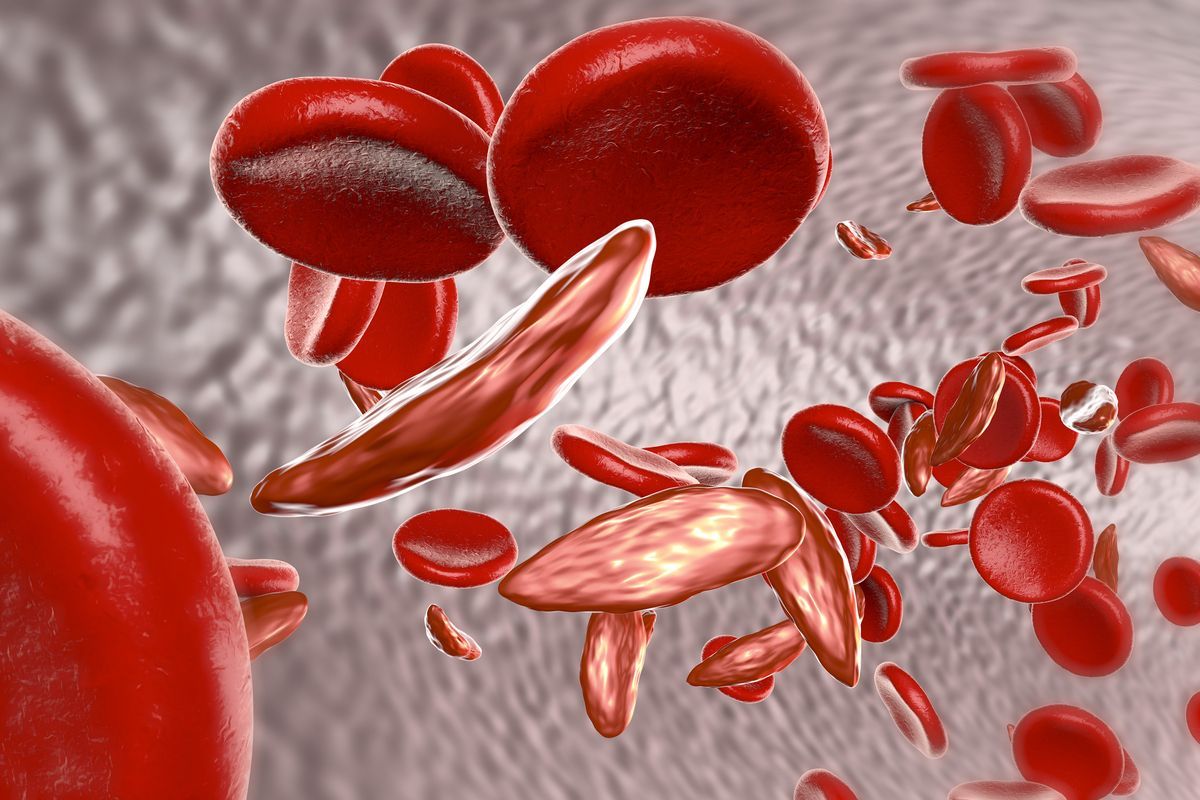- Center on Health Equity & Access
- Clinical
- Health Care Cost
- Health Care Delivery
- Insurance
- Policy
- Technology
- Value-Based Care
Imatinib Could Be Therapeutic Option for Treating Painful Sickle Cell Crises
Painful crises in sickle cell disease or sickle cell anemia could potentially be treated using imatinib as a therapeutic option, a small study found.
Painful crises that occur in patients with sickle cell disease (SCD) and sickle cell anemia (SCA) could potentially be treated using imatinib, according to a study published in Hematology, Transfusion and Cell Therapy.
Sickle cells

Pain in patients with SCD and SCA has been linked with vaso-occlusive crisis (VOC), a reduced oxygen supply, and infarction-reperfusion tissue injuries. Imatinib, an oral tyrosine kinase inhibitor, has also been found to mitigate inflammation through inhibition or modulation of pro-inflammatory cytokines, and it can potentially inhibit the platelet-derived growth factor kinase in addition to mast cells. Targeting mast cells could be an approach to decreasing pain in patients with SCA, the study authors noted.
The study aimed to determine whether treatment with imatinib would reduce sickle cell crisis in patients with SCA who are resistant to treatment with hydroxyurea, which is the standard of care and only FDA approved drug for the treatment of SCA.
The study used a prospective interventional pilot design and took place in Iran from November 2011 to July 2014. Patients were eligible if they had a pain crisis that could not be controlled with hydroxyurea and had a history of more than 3 hospitalizations in a year before taking imatinib. Number of hospitalizations, duration of total and average hospitalizations, analgesic use, and a reduction in pain were the primary parameters evaluated. All participants were given 100mg of imatinib twice per day, hydroxyurea was given as before, and folic acid was given as complementary drug. Patients had follow-ups every 6 months.
There were 7 patients included in this study who had a mean age of 26 years, and 4 were male. The researchers found that the number of hospitalizations decreased from 62 to 16 times after switching treatment to imatinib. The median number of hospitalizations was also reduced from 11 (range, 4-12) to 2 (0-5) times from before to after treatment.
Total days of hospitalization among all patients substantially decreased from 213 days to 26.5 days before and after treatment with imatinib. The median duration of hospitalization decreased from 21.5 (7.25-45) days to 0.75 (0-4) days from before to after treatment. Use of analgesics pethidine, tramadol, and nonsteroidal anti-inflammatory drugs was reduced by 93.5% in 4 patients, 100% in 1 patient, and 75% in 1 patient respectively. Reduction in chronic pain was also found to be 70% in a subjective pain rating scale.
There were some limitations to this study. The study sample was small at 7 patients. The imatinib was also not studied as a singular option and was instead added to the standard treatment.
The researchers concluded that a significant reduction in hospitalizations, length of total hospitalizations, and duration of each hospitalization was found after starting imatinib treatment. Use of opioids, analgesic consumption, and chronic pain were also reduced in patients who started the treatment.
Reference
Karimi M, Bahadoram M, Mafakher L, Rastegar M. Impact of imatinib on reducing the painful crisis in patients with sickle cell disease. Hematol Transfus Cell Ther. Published online August 10, 2023. doi:10.1016/j.htct.2023.06.007
First Subcutaneous Prophylaxis for Hemophilia A and B With Inhibitors Approved by FDA
December 23rd 2024The approval of concizumab-mtci (Alhemo) injection marks a significant milestone in managing hemophilia A and B with inhibitors by preventing or reducing bleeding episodes in adults and children 12 years and older.
Read More
